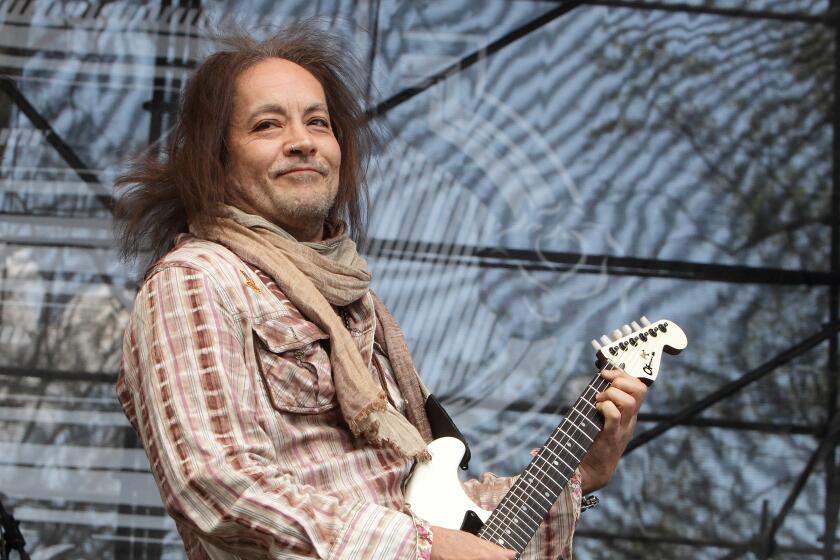Artist Chris Burden reflects on L.A. skyscraper that draws his eye
One way to know you’re in Chris Burden’s studio: erector sets on the floor. Since the 1980s, when the artist stopped doing performances that rivaled Marina Abramovic’s for their self-inflicted wounds and bodily deprivations, Burden has become known for his architectural (though not full scale) art installations.
There’s “Metropolis II,” his miniature racetrack inside LACMA that sends more than a thousand model cars coursing through a small cityscape clad with attention-getting (and sometimes repulsing) mirrors.
There’s his formation of Art Deco lampposts outside the museum, which director Michael Govan once compared to the Parthenon and which kids of all ages have turned into a sort of playground, whether hanging off posts or hiding behind them.
And now through Nov. 11, visitors to One Colorado in Pasadena can see another architectural sculpture by Burden: a four-story skyscraper he first drew up in 1991 that was built a decade later by architects Linda Taalman and Alan Koch.
Frustrated with L.A. County building codes, Burden had asked an architect: What’s the biggest building you could build here legally without a permit? The answer at the time, a structure measuring 35 feet tall and 400 square feet, gave him the parameters for a work that looks like an empty building but feels like a loaded, anti-establishment act of conceptual art.
This loophole of a building, called “Small Skyscraper (Quasi Legal Skyscraper)” was just one reason why we wanted to talk to Burden about a favorite building in the area. And, yes, it turned out to be a skyscraper.
I taught at UCLA for 26 years, and every time I came down Hilgard or turned on Wilshire, it always gave me pleasure to see this building. It’s a visually complex and satisfying office building. It’s called the Tower, and it’s a 24-story skyscraper on the corner of Wilshire and Midvale with stripes of dark granite and dark windows and a sort of sand-colored limestone running around and up the tower. It must be very hard to build a successful office building because of the constraints of the form. All you need is a shoe box and you start cutting it up. But this stands out. I like the form and the vertical elements that all fit together. I like the top, which looks like it has a crown with buttresses, a classic or gothic element reinterpreted. There may be references to the Flatiron Building too: there’s an angle when you are directly facing the building, looking south, and it gets really narrow and the bulk of the building disappears. Not to name specific architects, but it doesn’t have to do a lot of gymnastics to stand out — no gyrations or back flips. Also the vertical stripes that you can see from Wilshire work like the stripes of a shirt — it’s what you wear to look skinny if you’re a heavyset person like myself. It makes the skyscraper look like even more of a skyscraper. I found out that the architect is Helmut Jahn and that he did a big airport in Thailand, actually a lot of airports. But I don’t really know his work, and I’ve never been inside this building. It’s more a sculpture for me, a volume that interests me. I didn’t look at it while making “Metropolis II,” but it feels like something I could have made for that miniature city. — Chris Burden, as told to Jori Finkel
More to Read
The biggest entertainment stories
Get our big stories about Hollywood, film, television, music, arts, culture and more right in your inbox as soon as they publish.
You may occasionally receive promotional content from the Los Angeles Times.










